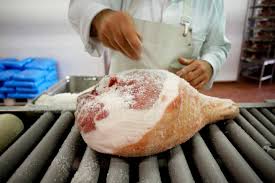Italy: Parma ham is one of tastiest exports – Now it’s in big trouble

Rome: There’s nothing quite like the mouthwatering taste of real Prosciutto di Parma, known the world over as Parma ham.
The Italian delicacy, which generates an annual turnover of $1.6 billion, is prized by Italians and enjoys a protected status — only meat cured in the northern region of Emilia Romagna using just Italian-grown pork legs, salt and air can be certified as authentic by the Parma Ham Consortium.
Tourists regularly flock to the region, known for other epicurean delights like balsamic vinegar and Parmesan cheese, to savor the tastiest cuts in their place of origin, bringing in more income as they join guided tours of ham producers.
But all is not well in ham country. A warming climate and the spread of viruses affecting the pigs are causing big problems for Italian pork. The end result is that Parma ham as we know it is increasingly hard to find on international dinner plates.
Unlike many heavily mechanized meat processing industries, Parma ham production is steeped in history and tradition.
In factories like the Slega prosciuttificio, in the hamlet of Langhirano near the city of Parma, Stefano Borchini remembers his father teaching him methods of curing Parma ham that date back to Roman times, when local salt was used to preserve the meat.
The Italian-grown pig’s hind leg is carefully butchered and then salted by a maestro salatore, or salt master, and then left for about a week in a cooling room to begin a process that must take at least 400 days and can be cured for up to three years to create the finest aged Parma ham.





